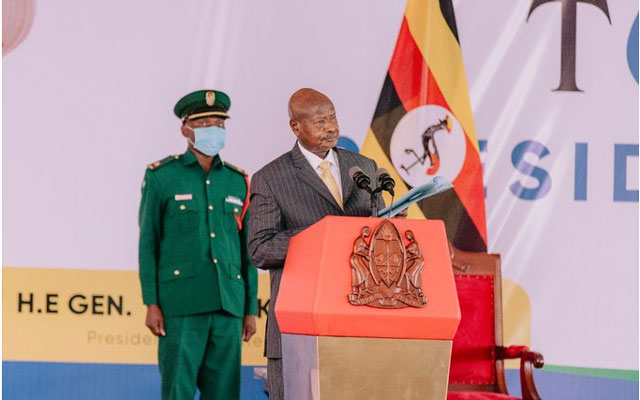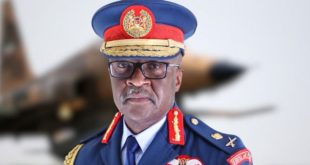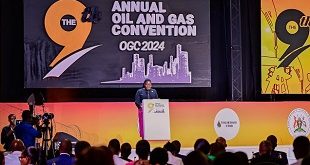
Dar es Salaam, Tanzania | THE INDEPENDENT | President Yoweri Museveni has told business leaders at the Tanzania-Uganda Oil and Gas Symposium in Dar es Salaam that the region’s survival will depend on how fast they can push for integration.
“You really need to work with the political class to unequivocally support both the economic and the political integration of East Africa and Africa. A federated East Africa would create a united market for the businesses of 200million people, who will be 401 million by 2050, (according to the UN projections),” Museveni said on Sunday.
He said the political federation would also make it easier to handle issues of insecurity such as the insecurity in Eastern Congo, Somalia, Mozambique which affects even the countries that are stable because we have not and we cannot build walls between these sister countries.
He added that, “East Africa is quite homogenous, around the language of Swahili on top of the shared heritage of the Bantu, Nilotic, Nilo-Hamitic and Cushitic peoples of this area. It is these similarities and ancient linkages, that should enable East Africa to achieve maximum unity in the form of both political (federation) and economic (common market) integration.”
Oil ready
“I am happy to tell Tanzanians, Ugandans, and the world that the activities on the pipeline are complete,” Museveni told the gathering of oil experts and government leaders.
He said Uganda and Tanzania have in place all it requires to tap the oil whose pipeline will be built from Hoima to Tanga. He said despite issues related to climate change, oil will remain an important resource for the next four years, and can also be used to produce green products.
“Tanzanian, Ugandans, all the global citizens, the East African pipeline business is a good, durable business. It will create jobs during construction and after. Once the environmental concerns are addressed, the sky is the limit,” he said.
******
FULL SPEECH
The challenge before Africa today is an old one. It is the challenge that has faced man for the last four (4) and a half million years since man evolved from lower primates to the homosapien sapien species (the wise man), with a superior brain, walking on two legs (bipedal) and with a hand that can hold tools and do work. Since that time, man has been oppressed by two phenomena: oppression by nature and oppression by fellow man. The latter phenomenon, included oppression in the form of slavery, feudalism, colonialism, dictatorships etc. The former, included suffering from diseases, drought, hunger, floods, pests etc.
However, man, being the wise mammal he had become since 4.5 million years ago, he has been using his superior brain and his work capable hands, to find solutions to those oppressive phenomena.
Starting with oppression by nature, man has been using three tools to ameliorate his situations. These have been: Science and technology; Philosophy; and strategy. Science and technology, meant understanding the laws of nature (gravity, pressure, magnetism, electricity etc.) and using them to solve his problems. Philosophy involves the understanding of man and his behaviour and, on the side of economics, understanding what stimuli can make him work most devotedly or otherwise. The strategy involves arrangements that can assist or inhibit man in his efforts to create wealth and overcome poverty.
Man, everywhere, has been making progress on the front of combating oppression by nature, but at different paces ─ some zones of the World moving faster than others on account of some identifiable reasons. One and a half million years ago, man invented fire. Fire, enabled man to solve so many problems. – to cook (kuteeka), to roast (kwootsya), to fry (kukaraanga), to light (kumurika), to warm oneself (kwoota), etc. This enabled man to go from trees and start living in caves which were more comfortable than the former because he could now warm (kutagatsa) the caves which were too cold for human habitation and expel the darkness
(kumurika, kuhweeza). 10,000 years ago, he started domesticating crops and between 8000 to 2500 BC, he started domesticating animals.
In terms of philosophy, societal ideas evolved from metaphysics (pre-destination etc.) to the understanding of man’s ability to influence his destiny by working.
Meanwhile, especially in Europe, society was evolving. As Karl Marx pointed out, by the time he wrote in 1848, society had gone through 4 social systems of the: primitive society, the slave state, feudalism and capitalism and was now entering the era of socialism- communism. The best crucible of understanding these phenomena of social – evolution, is the onset of the French Revolution in 1789. By this time, France and, may be other parts of Europe, was a four classes society which were: the feudalists (the aristocrats) that lived on rent from land; the peasants that were serfs on the land owned by the feudalists and had to surrender a part of their harvest to the landlords; the new class of the middle- class (the bourgeosie) that lived on profits- the difference between the costs of inputs in the production of a good or a service and the price of the final product (these were manufacturers; traders, service providers etc.); and also, the new class of the working class (the proletariat) who no longer owned anything except their labour, which they sold to the bourgeosie in return for wages. This is how, you the businessmen come on the scene.
This new class, the bourgeoise, caused a lot of changes in the World – good and evil. On the side of evil, you have imperialism, the slave trade (primitive accumulation of capital), genocide etc. However, on the positive side, the middle- class, being interested in profits, apart from looking for raw- materials, they also needed markets. The more buyers you get, the better the business. That is how the bourgosie in France propelled the anti- feudal Revolution of 1789, which included the defacto balkanization of France.
Although, France had been one kingdom for a long time (ever since 843AD), there were, nevertheless, internal fiefdoms (Provinces within France under the control of feudal lords) that imposed taxes known as Taille tax on goods being traded in the inter- province trade. This, of course, disadvantaged trade so much. Who was benefitting from these taxes? The answer: the feudal Lords. At whose expenses? The answer is: at the expense of the bourogesie and the French people in general because those taxes made goods more expensive, slowed down the rate of growth of the companies, which affected their ability to create jobs and also slowed down the rate of growth of those companies in expanding the taxbase. When it came to the fragmented Germanic populations of what became Germany later and the Latin populations of what became Italy later, you see, again, the role of the business interests working for the integration of those peoples and countries. In the case of Germany, it had the big farmers known as Junkers in the German Kingdom of Prussia, one of the 39 Kingdoms into which the Germanic people were divided, that pushed for the unification of Germany. That effort was achieved in 1870, following the Franco- Prussian war of 1870. The unification of Italy was achieved in 1860, following efforts by people like Henry Cavour of Piedmont and Garibaldi. Earlier, in 1776, the British American Colonies, again, led by business interests, had liberated themselves from the rule of the British king, George the III. Their slogan when they poured British tea in the sea at Boston was: “No taxation without representation”; again, a middle- class demand. The leaders of this Movement, George Washington and others, correctly decided to unite the 13 British colonies of: New Hampshire, Massachusetts, Rhode Island, New Jersey, Connecticut, Delaware, Maryland, etc., into the nucleus of the USA, that , by 1945, had become the most powerful country in the World. Just next door, you had the older Spanish Colonies of Latin America and Brazil that has belonged to Portugal. Instead of uniting, their leaders preferred balkanization (remaining scattered). Today, with the help of Televisions, you can see the different products of the two laboratories of history ─ one in North America and one in South America. In North America, you have power and prosperity, their other internal challenges, notwithstanding. In Latin America, you have weakness, poverty, insecurity and desperation. You have seen on TV, thousands of desperate people, walking on foot for thousands of miles, going to the success of history, the USA, from the failed experiment of history, Latin America.
When it, therefore, comes to Africa, particularly East Africa, we cannot say that we are short of examples of what needs to be done in the last 500years of the long human history. The question is: “If you do not ensure the availability of some factors, including the availability of a large market, how will business grow?” Secondly, the question is: “If business does not grow, how will you create jobs, how will you ensure the production of goods and services that you need for import substitution and export promotion, how will you expand the tax base to get enough money for the Government to provide adequate services for the people, including the building of the infrastructure etc.?”
By 1986, when the NRM took power after an armed conflict of 20years (1966-1986),the economy of Uganda had collapsed and had been totally informalized. Colonialism and the immediate post colonial years, had seen the emergence of a small “enclave economy” of modernity, surrounded by a sea of backwardness. The writers of that time, were describing that small economy as the economy of the 3Cc and 3Ts. The 3Cs were: Cotton, Coffee and Copper and the 3Ts were: Tobacco, Tea and Tourism. By 1986, 2 of the 3Cs had totally collapsed. These were: copper and cotton; it was only coffee that was still limping on, with the export of 2 million bags per annum of 60kgs each. Except for tobacco, the other two Ts, had either disappeared completely (e.g. tourism) or shrank greatly (e.g. tea from 23 million Kgs exported to only 3 million). The word enclave means island and an enclave economy, therefore, means an island of modernity surrounded by a sea of backwardness (e.g. peasants only working for the stomach that some people call subsistence farming). The good luck for Uganda, was that what became the NRM Party, was, initially, a Student Movement in the 1960s, some of them active here in Tanzania (1963-1986). During that long period, we had had time to study and also see in practice, the impact on efforts for social- economic transformation (positive and negative) by the different policy stimuli or disstimuli”, if we can coin such a word. On account of that, especially our decision to encourage the private sector in Uganda, including bringing back the Indians who Idi Amin, in his ignorance, had expelled, our being socialists not withstanding, has enabled the economy of Uganda to grow at the rate of 6.5% per annum for the last 35years. The economy could have grown much faster, if it was not for the opportunists, careerists and the corrupt among us. This limited growth, has transformed Uganda into a land of surpluses (omweeru) while in 1986, it was a land of ebula (shortages). We had shortages of sugar, salt, soap, textiles, paraffin etc. etc. The whole economy had been informalized into a magendo (smuggling), kusamula (speculation), kibaanda (forex black market) and ebula (shortages). It is now the opposite. Everything is in surplus: sugar, milk, maize, bananas, soap, other industrial products (cement, steel bars – mitayiimbwa, cooking oil, etc., etc.). The problem is the market. In order for these businesses to continue growing, we must access more of the internal market by the population acquiring more purchasing power (by having incomes in their pockets) and also our manufacturers deepening the industrialization process. Although we say that we have surplus milk today, our production having grown from 200 million litres in 1986 to now 2.8 billion liters, it is on account of the Ugandans drinking only 60litres of milk per person per annum. If they were drinking the recommended 210litres per person per annum, Uganda, with its 43 million people, would need today, 9 billion litres per year. Hence, the question of over-supply would not arise. Apart from the purchasing power, there is the issue of deepening industrialization.
Ugandans have been crying with the issue of surplus sugar and surplus sugarcane in some areas of Uganda. Why? It is because Ugandans presently consume 380,000 tonnes of sugar per annum, while our production is currently 550,000 tonnes per annum. This is, however, sugar for chai only. How about industrial sugar for use by Coca Cola, for pharmaceutical industries (children syrups for medicine)? That was none of the business of either the planners in the Ministry of Finance and Planning and also unplanning or the business sector of Uganda. Consequently, while crying about surplus sugar, Uganda alone was importing 90,000 tonnes of industrial sugar. In order to produce that quantity of industrial sugar, you need 100,000 tonnes of raw sugar. How much industrial sugar does East Africa import per annum?
Then, there is the regional market and CFTA market. This is where you come in. You really need to work with the political class to unequivocally support both the economic and the political integration of East Africa and Africa. Since 1963, I have been a follower of Mwalimu Julius Nyerere on the issue of the Political Federation of East Africa. My staff should distribute the copies of the Uganda Argus Newspaper of the 6th of June,1963.
A federated East Africa would create a united market for the businesses of 200million people, who will be 401 million by 2050, (according to the UN projections). The political federation would also make it easier to handle issues of insecurity such as the insecurity in Eastern Congo, Somalia, Mozambique, etc., which affects even the countries that are stable because we have not and we cannot build walls between these sister countries. Moreover, East Africa is quite homogenous, around the language of Swahili on top of the shared heritage of the Bantu, Nilotic, Nilo-Hamitic and Cushitic peoples of this area. It is these similarities and ancient linkages, that should enable East Africa to achieve maximum unity in the form of both political (federation) and economic (common market) integration.
Then we go to the CFTA (Continental Free Trade Area). I did not agree with Muamar Ghaddafi nor with Nkuramah Osagyefo, nor did Mwalimu, on the issue of one Government for the whole of Africa. At the Continental level, you do not have the same similarities like you have in respect to East and Central Africa. You may even have some irreconcilable contradictions that would not permit the maximum level of integration (political federation). However, the common market of Africa, is possible and desirable. It would give business a market of 1.4Bn people today, that will grow to 2.5Bn by 2050.
The two levels of integration ─ political ─ economic for East Africa as well as economic for Africa – would create a bloc with which we can negotiate durable market access internationally ─ with the USA, China, EU, Russia, India, Japan, Indonesia etc. You remember the World is Mpa, nkuwe ─ give me so that I give you also – reciprocity.
Why all those efforts? It is on account of our search for prosperity (jobs, goods and services, a bigger Government ─ revenue, tax base, more export earnings, more value addition, better infrastructure, better services such as health and education) and strategic security (stronger armies that are able to ensure security and defend us against any and all enemies of whatever potential), taking advantage of our similarities, linkages and a common history.
In my view, this is part of the historical mission of the genuine business class of Africa. Otherwise, if we build a Latin America instead of a United States of American in Africa, we shall condemn our children to the sort of miseries you see in Latin America and even the Middle East, not to mention the harvest time for problems in the Africa of today (Mali, Burkina-Faso, Libya, Central Africa Republic, Somalia, Eastern Congo, Mozambique etc.). When we talk of the Business Class, of the Middle Class, of the bourgeoise, we should not forget that some of the middle class groups play a parasitic role in backward economies. China has, within 70 years, gone from being No. 56 (in 1951 with $30.5bn) in the size of its wealth (GDP) to being No.2 today on account of the accuracy in analysis of its leaders of this issue of the middle class and also of other issues. Both Mao tse Tung and Deng Hsiao Ping, correctly disassembled the middle classes into four types if I remember correctly. These were: the national bourgeoise, the comprador bourgeoises, the petty bourgeosie and the bureaucratic bourgeosie. Of all these, the positive bourgeoise were the national bourgeosie, that part of the middle class that works to retain blood in Uganda and also to get blood from other countries, legitimately and equitably, to strengthen our economy. These are commercial farmers, manufacturers, service providers for activities that either substitute imports or promote export earnings. The bad elements are the comprador bourgeoise, those who work for foreign business interests in our countries in lines of businesses that Ugandans can take up. These are mainly importers, commission agents etc. The other dangerous groups are the bureaucratic bourgeoise
e.g., civil servants.
These are divorced from production but are paid by the Government and never bother to find out how the Government gets the money, nor do they care about the rest of the citizens since they are paid, whatever happens. The middle class we need are the National bourgeoise- the commercial farmers, the manufactures for imports substitution and export promotion and service providers that either save or earn foreign exchange (Tour operators, Doctors, Engineers, Hotel owners etc.).
Coming to the East African oil pipeline and the business opportunities it offers, I first declare that I have never been intoxicated by oil. Uganda discovered petroleum in 2006. It is now 15 years but the oil has not been pumped out of the ground. Yet, the economy of Uganda is growing. Japan is the third richest country in the World, but it has no oil, no minerals and no agriculture. It relies on the brains and the skills of its people. So is South Korea and even China.
This is not to say that the oil of this region, is not important. Oil has been important and will continue to be important. Oil transformed the very poor countries of North Africa and the Middle East into very affluent societies on account of the petrodollars that started flowing in that area following Gaddaffi’s activism for higher oil prices and the Arab-Israeli war of 1973. There is now awareness that some uses of petroleum generate gases that create a blanket effect in the atmosphere that warms the temperature of the globe, melts the ice-sheet and the glaciers and causes the sea to rise and unpredictable rain patterns. That, however, is not the fault of oil. It is the fault of the misusers. Uganda, therefore, supports the Movement towards cleaner energy sources: hydro, solar, wind, geothermal and even nuclear and we are preparing for all. Two points are, however, clear. First of all, we shall use fossil energy for another 40(forty) years. Infact, although I am never an opportunist, I cannot avoid noticing an opportunity for some of us that have entered the night club when the notice for banning night clubs was proclaimed. New night club goers will not book and, hence, we shall have the night clubs to ourselves. Could this not be the reason the price of oil is going up?
The climate salvation efforts are targeting, correctly, the use of coal for power generation and the internal combustion engines that should be replaced by electric engines. These are not the only uses of oil.
There are safer uses of oil.
These are:
- Car tyres ─ these synthetic tyres are much stronger than the rubber ones;
- Chairs and car-seats;
- Polyester for textiles to mix with cotton;
- Medicine;
- Bitumen (asphalt);
- Cosmetics; 7) Detergents; 8) Packages, etc.
Here, the environment issue is no longer greenhouse gases but waste-disposal. Can we not perpetually recycle some of those for re-use?
Therefore, Tanzanian, Ugandans, all the global citizens, the East African pipeline business is a good, durable business. It will create jobs during construction and after. Other service providers will also be able to supply those who work in the oil sector e.g. hotels, transport, food–suppliers etc. Unlike Japan or Korea or Saudi Arabia who are either do not have oil or only have oil, East Africa has got everything: agriculture, minerals, forests, oil, gas etc. Once the environmental concerns are addressed, the sky is the limit
I thank everybody for giving me the opportunity to put forward our long-held Pan-African vision.
 The Independent Uganda: You get the Truth we Pay the Price
The Independent Uganda: You get the Truth we Pay the Price


